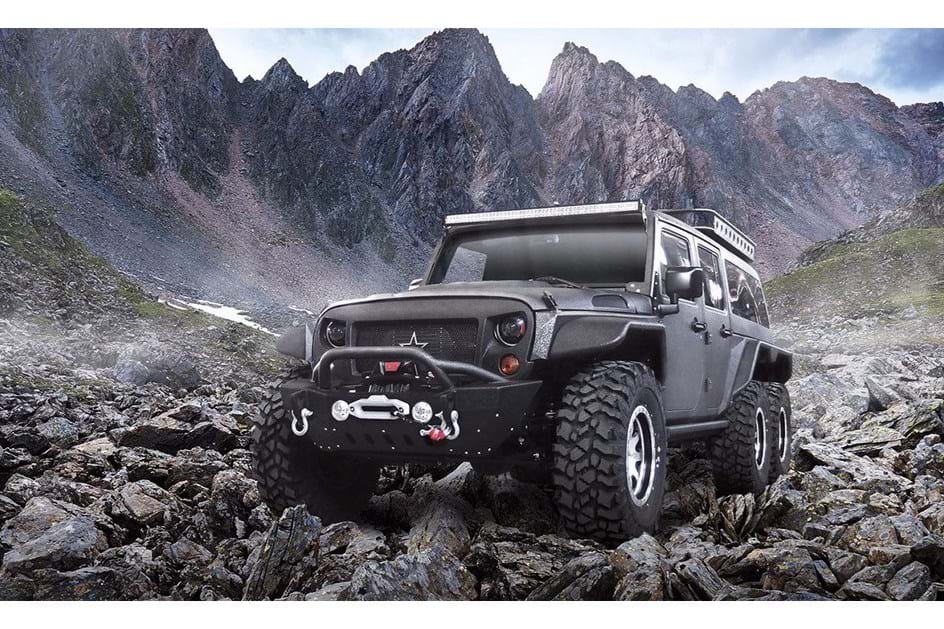

They eventually took the idea to Freeman Thomas, DaimlerChrysler VP of advanced design, who assigned Mark Walters to join the effort. Schroeder and Chyz took the proposal to Senior Vice President of Design Trevor Creed, who initially said, "we don't build bikes" but still allowed some design sketches to be created, which were "mind blowing" enough to bring Creed on board. The only motorcycle with a displacement in the Tomahawk's league uses the same V-10 car engine, the one-off 2009 Millyard Viper V10, a bike created to rival the Tomahawk after Allen Millyard was underwhelmed by a Tomahawk speed run at the Goodwood Festival of Speed in the UK. The low-volume Boss Hoss motorcycle is built around a 5.7 L (350 cu in) Chevrolet V8, and the largest-displacement mass-produced motorcycle is the 2.3 L (140 cu in) Triumph Rocket III, neither anywhere close to the 8.3-litre (510 cu in) Viper engine. According to designer Mark Walters, the question asked was, "What if we had a Viper engine and a Champion chassis? Something like a Boss Hoss", resulting in an engine displacement five times a typical Harley-Davidson. The idea for a Viper-engined motorcycle started with two lower-level Chrysler Group employees, Bob Schroeder, a design office modeler and motorcycle rider, and Dave Chyz, vehicle build specialist and drag racer.

Ĭhrysler Group CEO, Dieter Zetsche (top) and COO, Wolfgang Bernhard Industry observers said the Tomahawk was a resounding success at one-upping rivals and taking the trade show spotlight, and was a branding and marketing coup, generating media buzz and sending the message that Chrysler was a bold, ambitious company, unafraid to take risks. As they were not street legal, Dodge said the reproductions were "automotive sculpture", "intended for display only" not fully operational. The Tomahawk was sold through the Neiman Marcus catalog at a price of US$555,000, and as many as nine are thought to have been have sold. No independent road tests of the Tomahawk have ever been published, and the company said that in internal testing it was never ridden above 100 mph (160 km/h). These estimates, and the more conservative 250 mph (400 km/h) a designer suggested could be possible, were debunked as implausible, or physically impossible, by the motorcycling and automotive media. ĭodge press releases and spokespeople gave various hypothetical top speeds ranging from 300 mph (480 km/h) to as high as 420 mph (680 km/h), which analysts thought were probably calculated with horsepower and final drive ratio alone, without accounting for drag, rolling resistance, and stability. The Tomahawk's two front and two rear wheels are sprung independently, which would allow it to lean into corners and countersteer like a motorcycle. The Retro- Art Deco design's central visual element is the 500-horsepower (370 kW), 8.3-litre (510 cu in) V10 SRT10 engine from the Dodge Viper sports car. Experts disagreed on whether it is a true motorcycle.
The Tomahawk attracted significant press and industry attention for its striking design, its outsize- displacement, 10-cylinder car engine, and its four close-coupled wheels, which give it a motorcycle-like appearance.

The Dodge Tomahawk is a non- street legal vehicle introduced in 2003 by Dodge at the North American International Auto Show, initially as a one-off concept, and then later that year as a limited production vehicle when DaimlerChrysler announced they would sell hand-built reproductions on order.


 0 kommentar(er)
0 kommentar(er)
